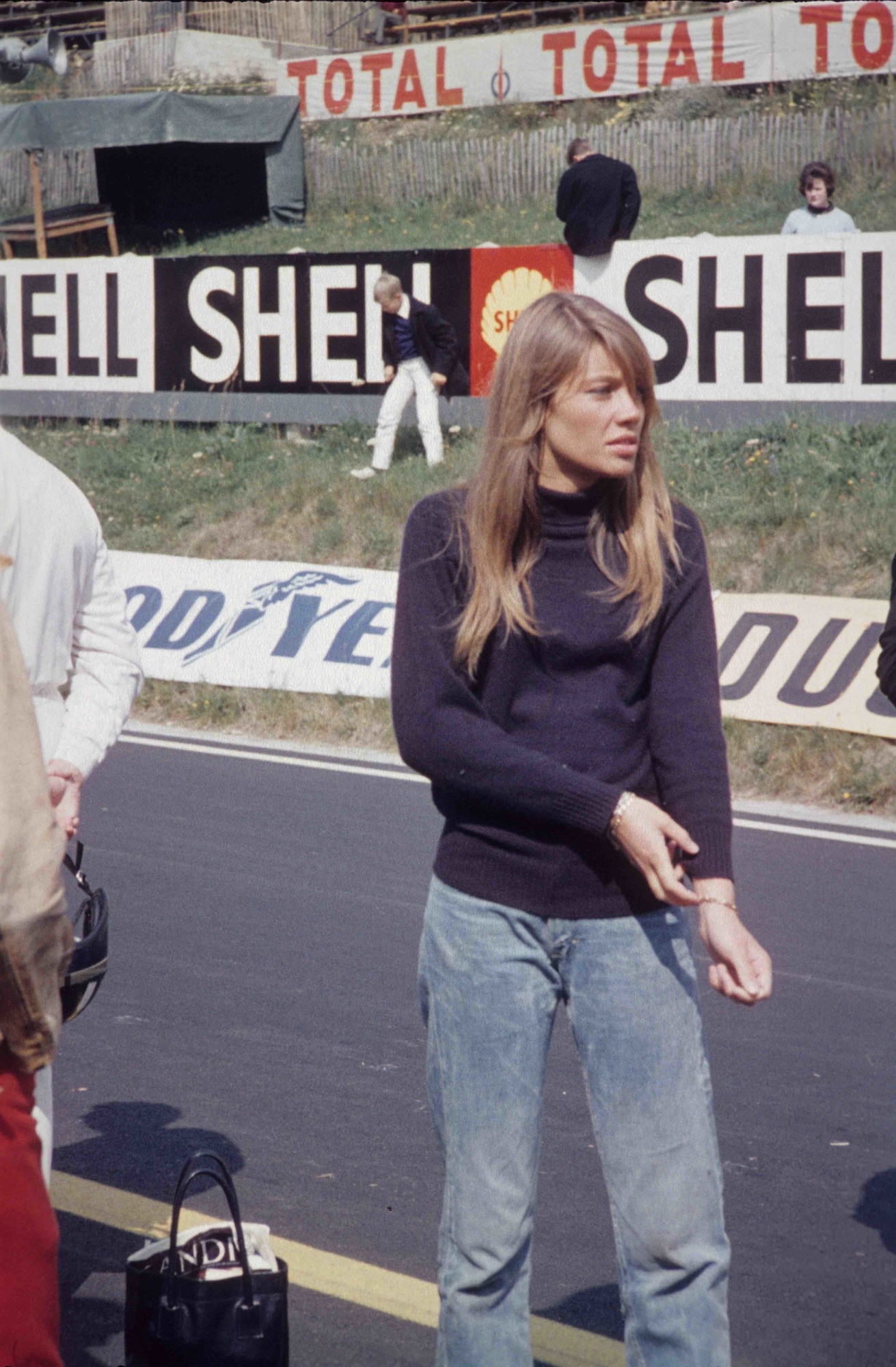Our favorite writers muse on their muses as we bring back the “My i-Con” essay series for the second year in a row. From Grimes to Grace Jones, read every heartfelt ode to personal style here.
It’s 1998 and Jennifer, a family friend in her forties, drinks white wine with a dash of cassis, wears CK One, and is able to imbue a conversational “yes” with vast measures of firm thoughtfulness. She has also, I learn, spent her teen-hood in Paris, studying at a lycée. These traits are, to my teenage mind, her defining features. Much later, say, nearly twenty years later, I’ll realize that they also make her excellently credentialed for introducing a suburban British teenage girl to Françoise Hardy.
I am 14-years-old in this story, because every story about idols is a story about being 14-years-old. That’s the age when the rift between our lived, small realities and our widescreen desires yawns. It’s the age when idols rush in to both sweeten and sharpen the pain of that rift. No one’s voice sounds more to me like that rift than Hardy’s, the shy ye-ye singer who received her 60s superstardom with private dismay.
She was 17-years-old when she wrote her most famous song and she’s now 72-years-old: plenty of time for her to get utterly sick of it. For me though, it’s never not fresh. Perhaps because each time I hear it, the 14-year-old part of me wakes up. “Tous Les Garcons” begins with an unhurried, bijou little melody so simple that you wonder if you’re hearing the theme tune to some long-past children’s TV show. And then a young voice begins to sing. She’s telling you about all the boys and girls strolling through the streets, “les yeux dans les yeux, et la main dans la main” – holding hands and sharing glances – and it all sounds so charmante that for a moment you might stick with the kids’ TV show delusion. But then you notice something in her voice, an affectlessness, as if behind the sweetness there’s a space emptied out by sadness. And here it comes: “Oui mais moi, je vais seule par les rues, l’âme en peine.”: Yes but me, I go alone through the streets, my soul in pain. As I put my GCSE-level French to use in parsing out these words, my own teenage soul (in pain, naturally!) thrilled to the sentiment. More than that, I responded to the song’s clichés with a cliché of my own: she is singing to me! Or even, c’est moi! The sadness was so severe but the melodies were so sweet and I had not, in my small and timetabled world of orchestra practice and geography homework, realized that a song could be two things at once.
When I began staring at photographs of her from the 60s I saw the same thing I’d sensed in the songs. Just as those primary-colored melodies ran alongside a Rothko’s worth of words, the simple prettiness of her style is edged with something resistant, wary and androgynous. She so often looks armored, rather than dressed. One image: wide-stanced in a tan suede mini-skirt, white turtleneck, white ankle boots. Another: hair breeze-blown and half-lit with sunlight, playing guitar in a cornfield in a chambray shirt, cut cleanly on the elbow. (I’m embarrassed at how breathless I feel at the cut of those sleeves.) And in all of them, always, the long brown hair and heavy bangs. These images have seeped in so completely that, in assimilating them, I’ve almost forgotten them.
I was 22-years-old and working my first proper journalism job when I cut my hair into a fringe. The next morning I watched my editor come in, glance at me, then surreptitiously ask one of our colleagues whether we had a new intern. She didn’t recognize me. This struck me as a supreme and beautiful irony: I had never recognized me better. It takes so long to become ourselves — we never really get there — but, absurdly, I felt I’d taken a leap forward with that haircut, as if I was delivered to myself via bangs. It was an exultant feeling — oh here I am! It’s only now, ten years on, same haircut, that I realize the crashingly obvious thing. That haircut, so very much mine, was Françoise Hardy’s.
Shortly after leaving a bad relationship — something perhaps better categorized as an embarrassing, dangerous nine months of mania — I bought a leather jacket. I wanted, very badly, to feel as if I could roll off a motorcycle and tumble across the rumble strips ungrazed, unfazed. I wore that jacket every day for weeks on end, even through the hot summer, folding my arms tight over my chest to make the leather creak and feel the tight carapace of it across my shoulders. Again, Françoise Hardy: this time in leathers, astride a motorcycle, glancing back over her shoulder with innocence in her eyes but something wary in the set of her jaw – a quiet, hard warning: don’t fuck with me.
In writing this I’m almost ashamed to realize I’ve never read a word of hers other than her lyrics, never watched an interview, that I know very little, really, about her life. But maybe this is just how our idols work, they fill that gap between having and wanting.
Credits
Text Hermione Hoby
Image via Flickr Creative Commons
